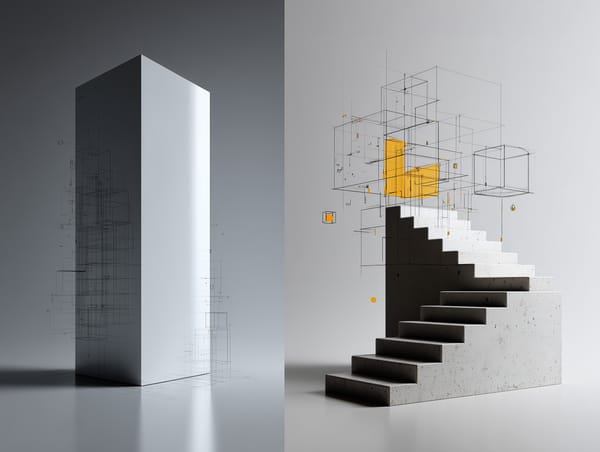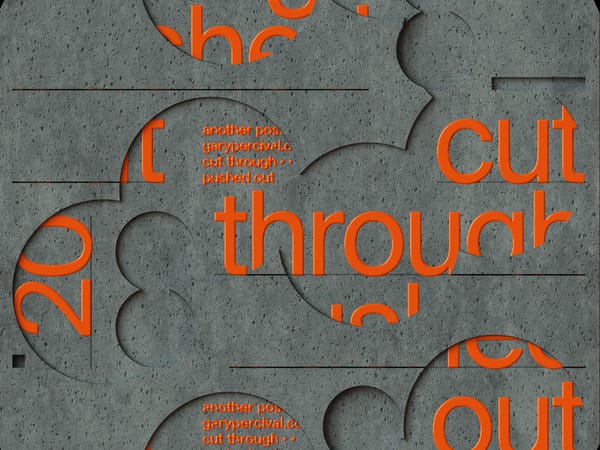The Paradox of Simplicity: Why Less is Actually More
Embracing simplicity in design and workflow not only enhances creativity but also demands a profound understanding and intentional focus to distill complexity into its purest form.

In the realms of freelancing, graphic design, and creative pursuits, minimalism is often hailed as the ultimate ideal. We strive for clean designs, concise messages, and streamlined operations.
Yet, as many discover, achieving simplicity is far from simple. It demands considerable effort, unwavering discipline, and intentional focus.
This paradox of simplicity offers valuable insights for both our professional and personal lives.
The Complex Journey to Simplicity
At first glance, simplicity seems straightforward—minimalism, clarity, and ease. However, a deeper look reveals that creating something simple is inherently complex.
"It requires distilling ideas, processes, and designs to their essence without compromising meaning or functionality."
This process demands not only technical prowess but also a profound understanding of the subject matter and keen judgement.
Consider a graphic designer tasked with creating a logo. A simple yet effective logo isn't merely about using fewer elements. It requires extensive research, multiple iterations, and the ability to encapsulate a brand's identity in its purest form.
Iconic logos like Apple's or Nike's exemplify simplicity, but they're the result of meticulous effort and refinement.
The Mirage of Effortlessness
We often crave simplicity due to the illusion of ease it presents. We assume a simple life, workflow, or design will be easier to manage.
However, simplicity doesn't eliminate challenges; it often requires us to confront and overcome them head-on. The process of simplifying can reveal underlying complexities we might otherwise overlook.
For instance, decluttering a workspace might seem straightforward, but it often involves difficult decisions about what to keep and what to discard. It necessitates confronting our attachments to objects and reorganising our space to enhance productivity.
"The result is a more efficient and pleasant work environment, but achieving it requires substantial effort."
The Role of Discipline and Intentionality
Simplicity demands discipline and intentionality. It requires deliberate choices and actions, prioritising what truly matters, and letting go of the rest. This is challenging in a world filled with distractions, competing priorities, and a constant information influx.
Cultivating simplicity involves more than goal-setting or time management. It's about fostering a mindset that values clarity and purpose in all aspects of work and life.
"The key to this approach is developing discernment—the ability to quickly identify what's essential. It's about cutting through noise to focus on the core of any task or problem."
Equally important is purposeful elimination. This means actively removing unnecessary complexities from workflows, designs, and daily routines. It's an ongoing process of streamlining and refining.
Mindfulness in the creative process is crucial. Being fully present and aware as we work helps us question whether each element truly serves the overall purpose. It's about creating with intention, not adding for the sake of addition.
Regular reassessment completes this approach. Periodically taking a step back to assess the effectiveness of our work and routines allows us to question established methods and make necessary changes.
By integrating these practices, we create an environment that nurtures simplicity. It's not about rigid rules, but about fostering a mindset that naturally gravitates towards clarity, purpose, and efficiency in everything you do.
The Art of Simple Design
For designers and creatives, simplicity in design is both an aesthetic and functional goal. A simple design is visually appealing, user-friendly, and effectively conveys the intended message. Achieving design simplicity involves several key principles:
- Clarity: Ensuring the design communicates its message unambiguously.
- Minimalism: Using only essential elements to achieve the desired effect.
- Focus: Highlighting key aspects of the design while eliminating distractions.
- Consistency: Maintaining a coherent visual style and structure.
These principles guide designers to create work that's both beautiful and functional. However, adhering to them requires skill, experience, and a willingness to iterate and refine.
Simplifying Workflows
Striving for simplicity in our professional workflows can lead to greater efficiency and satisfaction. Streamlining processes and systems requires careful planning and execution:
- Identifying Bottlenecks: Recognising where processes are getting stuck or delayed.
- Eliminating Redundancies: Removing unnecessary steps that don't add value.
- Automating Routine Tasks: Leveraging Tools and Technology to Free Up Time for Important Work.
- Continuous Improvement: Regularly reviewing and refining workflows to maintain efficiency.
Implementing these changes often requires an initial time investment, but the long-term benefits of a simplified workflow are invaluable.
Personal Simplicity
On a personal level, the quest for simplicity can significantly impact our well-being and quality of life. Simplifying involves decluttering not only our physical spaces but also our minds and schedules, leading to greater focus, reduced stress, and deeper fulfilment.
Steps to simplify your life:
- Declutter Your Space: Start with your physical environment to improve mental clarity and productivity.
- Simplify Your Schedule: Prioritise commitments and learn to say no to activities misaligned with your goals and values.
- Practice Mindfulness: Engage in practices like journaling to stay present and focused.
- Limit Information Overload: To avoid overwhelm, be mindful of information consumption and take breaks from social media and news.
The Rewards of Embracing Simplicity
Despite the effort required, embracing simplicity offers numerous benefits. It allows us to focus on what truly matters, enhances productivity, and fosters calm and clarity. For freelancers and creatives, this can lead to more fulfilling work and a greater sense of achievement.
- Enhanced Creativity: Fewer distractions and clearer focus allow our creative minds to flourish.
- Improved Decision-Making: Eliminating unnecessary options helps us make decisions more efficiently and effectively.
- Greater Satisfaction: Achieving simplicity in our work and lives can lead to deeper fulfilment and contentment.
Overcoming the Fear of Letting Go
One of the biggest obstacles to achieving simplicity is the fear of letting go. We often cling to things out of habit or a sense of security. Overcoming this fear requires trust in ourselves and in the simplification process.
- Start Small: Begin with minor changes and gradually build up to larger ones.
- Trust the Process: Have faith that simplifying will lead to positive outcomes, even if challenging at first.
- Focus on Benefits: Remind yourself of how simplicity will improve your work and life.
The Long-Term Impact of Embracing Simplicity
Adopting simplicity as a guiding principle in your creative work can have profound long-term effects:
Building a Distinctive Style
By consistently applying the principles of simplicity, you can develop a unique and recognisable style. This can help you stand out in a crowded market and attract clients who appreciate your approach.
Increased Productivity
As you streamline your processes and focus on essentials, you'll likely find that you can complete projects more efficiently. This increased productivity can lead to better work-life balance and the ability to take on more meaningful projects.
Sustainability
Simple designs and processes are often more sustainable. They typically require fewer resources to create and maintain, aligning with growing environmental concerns in the creative industry.
Adaptability
Simple systems and designs are generally more adaptable to change. In a rapidly evolving technological landscape, this flexibility can be a significant advantage, allowing you to pivot quickly when new trends or tools emerge.
By incorporating these principles of simplicity into your creative practice, you're not just improving your current work—you're investing in a sustainable, adaptable, and distinctive creative career.
Remember, the journey to simplicity is ongoing. As you grow and evolve as a creative professional, continually reassess and refine your approach to maintain the balance between simplicity and effectiveness in your work.
Conclusion: The Power of Simplicity
The journey towards simplicity is challenging but profoundly rewarding. For freelancers, designers, and creatives, embracing simplicity can lead to more meaningful work, greater efficiency, and deeper satisfaction. It requires effort, discipline, and intentionality, but the benefits far outweigh the challenges.
Understanding the complexity of simplicity, cultivating a growth mindset, and being deliberate in our choices can help us achieve simplicity in our work and lives. Whether through design, workflow, or personal habits, the effort invested in simplifying ultimately leads to greater clarity, creativity, and fulfilment.
As designer Dieter Rams said, "Less, but better." This principle reminds us that impactful work often comes from focusing on what truly matters and letting go of the rest.
Embrace the challenge, trust yourself, and discover the profound power of simplicity in your creative journey.



